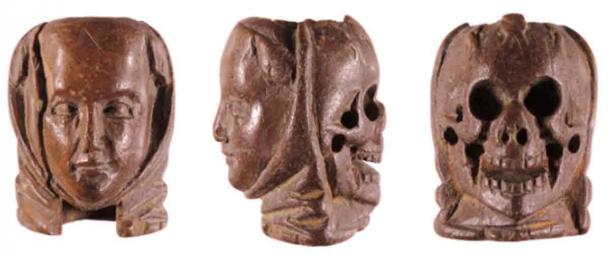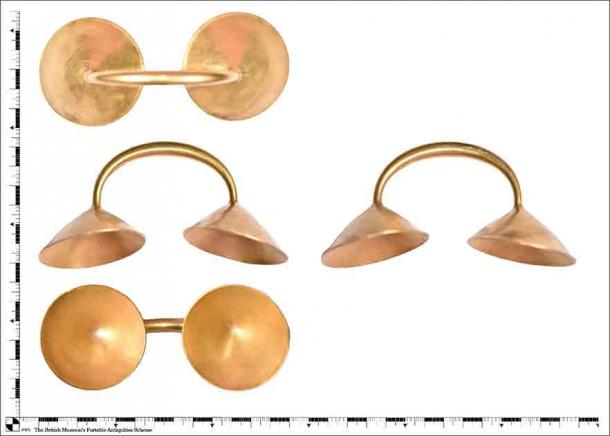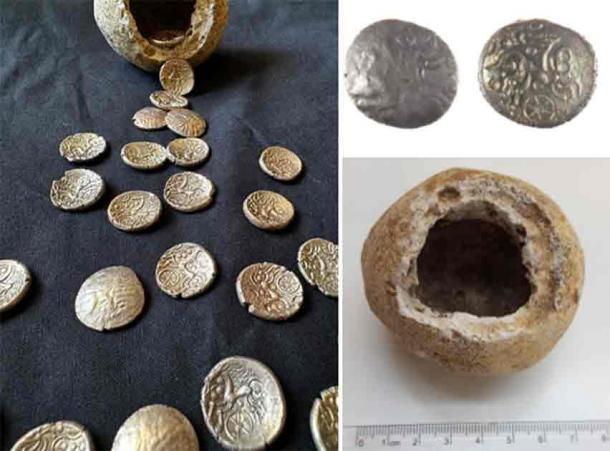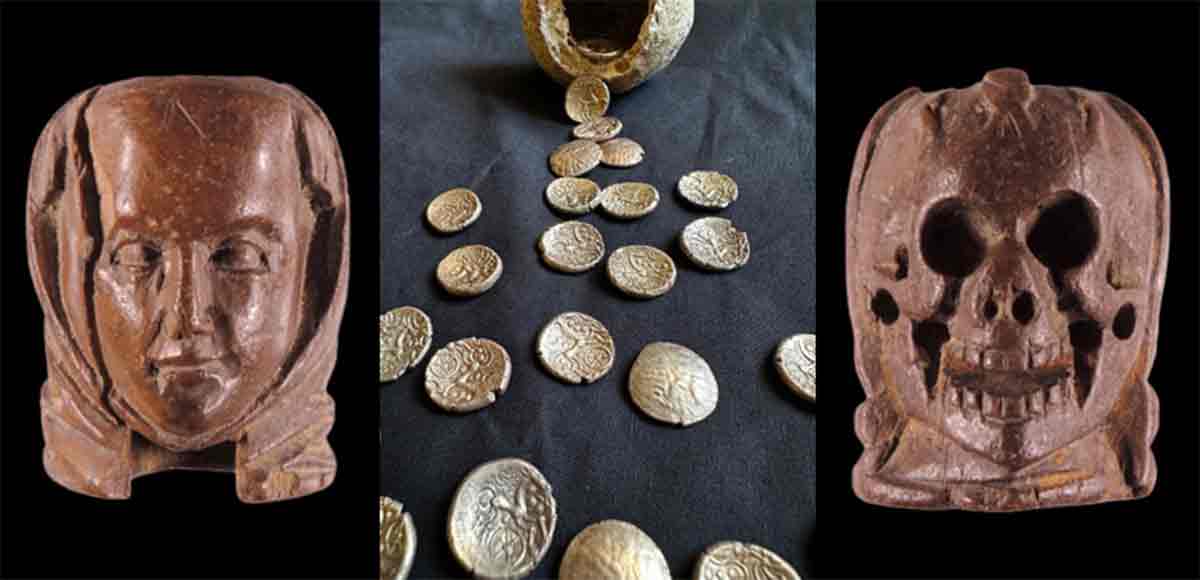UK Declared a Land Full of Hidden Treasure By British Museum
While Caroline Nunneley was exploring the Thames' shores in London, meticulously searching the mud on all fours for archaeological treasures, she encountered an unexpected find: a small, intricately carved object resembling a miniature human skull. Once again, a remarkable piece of medieval treasure had been retrieved from the earth of the British Isles. The find is one of a number of eye-catching finds highlighted in the UK Portable Antiquities Scheme Annual report for 2022 issued by the British Museum, which notes 53,490 archaeological finds were recorded, including 1,378 Treasure cases, the highest ever reported in a single year.
Public Finds Add to UK Treasures
The record-breaking figures highlight the huge contribution that members of the public are making to increasing archaeological knowledge in the UK today, notes the report. Most objects have been found by people metal-detecting, with the majority of the finds made on cultivated land where they otherwise could be lost to ploughing. A small proportion were found through mud-larking, which involves scouring muddy riverbanks for finds.
Leading the way in contributions were the agricultural counties of Lincolnshire, Norfolk, and Suffolk, renowned for their rich historical deposits. Specifically, Norfolk, Hampshire, and Kent reported the highest numbers of treasure finds, showcasing the diverse and rich heritage of these regions.
The Remarkable Medieval Skull Bead
The ‘cover star’ of the PAS annual report is a tiny, intricately carved bone rosary bead of ‘memento mori’ (remember that you die) type, showing the face of a young woman (possibly intended to represent the Virgin Mary) on one side and a skull (representing mortality) on the other.
- Mudlarking the Thames: How a Riverbed Became the World’s Biggest Archaeological Site
- Mudlarker Finds Bronze Age Shoe on a UK Riverbank Dated 2,800 Years Old!

The double-faced rosary bead with a lady’s face on one side, and a skull on the other. (©PAS/British Museum)
It was found by Caroline Nunneley, while mudlarking on the River Thames shore. Nunneley and a companion were astonished to discover that the object featured a face on the opposite side. It turned out to be a late medieval rosary bead, likely dating back to around 1450, meticulously crafted from bone and remarkably preserved in the river's anaerobic mud for over five centuries, reported The Guardian.
Nunneley, a Brighton resident with a five-year mudlarking license from the Port of London Authority, reflected on the bead's symbolism:
"She's just a woman reminding us that one day we were young and beautiful and full of life, and that we have to be aware that time is passing."
- Roman Penis Pendant Found in Britain Declared a “National Treasure”
- 47,000 UK Pandemic Finds, But This Tudor Coin Hoard Is King!
3,000-year-old Dress Fastener, Shines Bright
Another remarkable find came from Jonathan Needham and Malcolm Baggaley on New Year’s Day in 2022. While metal detecting in a muddy field near Ellastone, Staffordshire, they came across a rare, solid gold dress fastener from around 1000 BC. It was detected as they were trying to clean their boots on a grassy patch, guided by a faint beep that led to an extraordinary discovery.

Gold Staffordshire dress fastener from the Late Bronze Age. (©The Trustees of the British Museum/CC BY 4.0)
This remarkable gold object illustrates cultural links between Ireland and Britain during the Bronze Age. At this time Irish smiths were producing some of the most exquisite goldwork in Europe.
As confirmed by detailed examination by British Museum scientist Laura Perucchetti and curator Neil Wilkin, the large, enigmatic fastener is formed of a solid, cast, bow-shaped body connecting two skillfully raised cone-shaped terminals. It may have been worn on the body to hold together the cloak, skirt or dress of an important person. One of only seven discovered in England or Wales, the Staffordshire find is one of the best-preserved examples from Britain. The dress fastener has been recorded as treasure, and is likely to be acquired by a museum.
Hidden Hoard of Iron Age Gold
Additionally, a hoard of 26 Iron Age gold coins was found in West Berkshire, cleverly concealed within a natural flint container. These coins, all staters from the late Iron Age, add to the understanding of ancient practices and regional production of currency.

Images of the Berkshire Coin Hoard, and flint container. © The Trustees of the British Museum/CC BY-NC-SA 4.0)
Mark Jones, Interim Director of the British Museum, expressed pride in the museum's role in managing the PAS and overseeing the Treasure Act 1996 in England. He highlighted the scheme's importance in advancing knowledge of past civilizations and acknowledged the metal-detecting community's crucial contributions.
Michael Lewis, Head of PAS and Treasure at the British Museum, and Pippa Pearce MBE, Senior Conservator, both emphasized the success of the PAS in 2022 and the invaluable contributions of finders to the scheme. Their efforts not only facilitate the preservation of these items but also enhance the collective understanding of history and heritage across England and Wales.
Top image: Outside; Virgin Mary and Skull rosary bead, the star of the PAS 2022 Annual report launch. Center; Source: Portable Antiquities Scheme
By Gary Manners

















